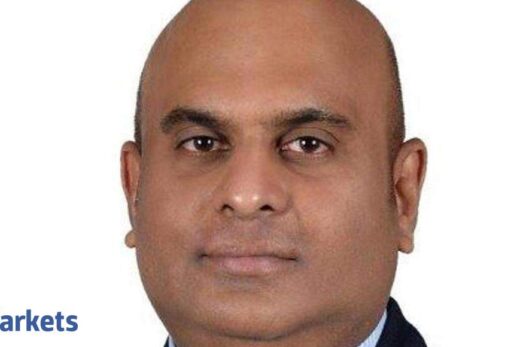What is your framework for portfolio selection in this kind of a market? What is your selection process?
We have basically divided our concentrated portfolio of about 24-25 stocks across three buckets — the SG, MO and SO. SG is the structural growth stories that come under the first bucket. These are the long-term compounding stories. The MO is the momentum opportunities which we take with a two to three year view and special opportunity (SO) is where we take investments with a one year view.
So we have the three buckets with one year, three years and five years views. Coming to the themes, given the recent disruptions like Covid and before that GST and demonetisation, and given the way things are evolving with Gen Y and not Gen Z occupying the larger part of the ecosystem. What I mean by that is that there are new age entrepreneurs and new age clients. The ecosystem and the government are also promoting start-ups.
There are three themes that we are largely concentrating our portfolios around; the first is the formalisation of the economy or the unorganised to organised. The top 4-5 companies are taking the lion’s share in each sector. Second is the higher use of technology in each and every thing that we do including digitalisation. We would not have thought of opening a D-mat account in 2010 sitting at home. Look at what happened last year! And last is the financialisation of savings.
There are more but these are the larger set of themes that we are focusing on in our portfolios.
I see some top class steel companies in your portfolio. We understand that in the last three-four weeks, the prices are stable to negative. What are your thoughts? Is it a temporary transitory correction which is taking place in your view and the steel story remains intact?
Absolutely. The steel cycle and metal cycle typically take about three to five years when the bull market trajectory starts. The last big one was in 2003 to 2008, which was a good five-year cycle. But this time, even though it started in August ‘20, till August ‘21 it has just been a year. There have been so much production curbs in China, which is the single largest producer of steel and metals, that prices are very high. They have put curbs on exports. That is leading to supply tightness and that puts demand growth at 6% or more globally.
Europe is growing at 10% or more. It looks like steel prices are there to stay or maybe go marginally higher. Remember, domestic steel prices are still at a 10-15-20% discount to the international prices depending on category.
There is room for further expansion in domestic prices and the current EBITDA estimates of steel including us is still not taking into account the current steel prices. It is estimated there would be a certain softness. While if the reverse were to be true, then the current prices were to sustain for the balance part of the year for most of these steel companies including the largest steel company in our portfolio, Tata Steel, if EBITDA goes down to as much as one time versus two times which it was two quarters back and even lower thereafter.
Just a disclaimer, we have vested interest in some of the stocks that we have been discussing including Tata Steel as these would be held in our clients’ portfolio.
I also see you have some new-age food tech companies in your portfolio, the recently listed ones. There is a large section of old investors who are building positions in Easytrips, Angel One, some of the other technology platform companies like exchanges, BSE, IEX, MCX. What are your thoughts on these technology enabled platforms and the new age ones technology enabled consumer tech companies? What are your thoughts here?
We are positive in this space and what is happening in the entire ecosystem. Whereas earlier it was Gen X and Gen Y which are the people born after 1980, now it is Gen Z, which is people born after 1996, who are a large part of the ecosystem which is driving this. People used to think that it is not easy to start a business in a year’s time. But during Covid, many businesses started in CY2020 and many actually have thrived in that period.
We are positive on this space and the holding that we have so far are two stocks — one is Zomato and one is IRCTC which we have in our clients’ portfolios. We are very positive on these two stocks, specifically Zomato, because the opportunity is huge even in the food delivery business. What’s more, what the company can do in terms of cross selling given the amount of huge data that they have today and what they may end up with in the next couple of years.
Zomato has a strong network of customers, restaurant partner tie-ups, inorganic growth opportunities because of the huge fundraise and the cash bank balance that they have after the IPO. Remember it is a duopoly. If you were to decide when to order, you literally do not have a third option. It is a huge market. Zomato is right up there in terms of growing 30-40% or more compounded year after year for the next many, many years. So I guess it is a huge opportunity.
The same is the case with a company like IRCTC as well. We consider it as a platform business because it is just not a railway ticketing business. They are trying to venture into other parallel businesses like hotel, tourism and bus booking and even airlines. Again a huge amount of other parallel opportunities are available given the data that they have over many decades.
You understand cement very well. You have in your portfolio. Across mid, small and largecaps, which names offer the best earnings growth for the next three-four years structurally and valuation and risk reward wise are most attractive in your view?
Among largecaps, we prefer
and in midcaps, it is JK Cement. The common theme that runs through these two companies is top notch management and the hunger for growth. Both of them have been growing for the last five years and have huge expansion plans for the next five years. The EBITDA margins are good, high and sticky. They have businesses other than the grey cement which means they would have white cement businesses.
Their last four years’ performance has been rock solid and steady. The return ratios are closer to 20% or more while ensuring that the balance sheet remains as light as possible. So put everything together, they may not have the cheapest of valuations, but that is what the market has taught us. Companies like UltraTech, JK Cement generate great return on capital anywhere between 15% and 25%. Both these companies have been good compounders in recent years, specifically JK Cement.
I would say that these are the top two picks — JK Cement and UltraTech. Let us not forget that there are sector tailwinds. It is a large part of the materials for building material space on which we are positive. We would be positive on real estate and building material and therefore it is another way of playing that segment.



